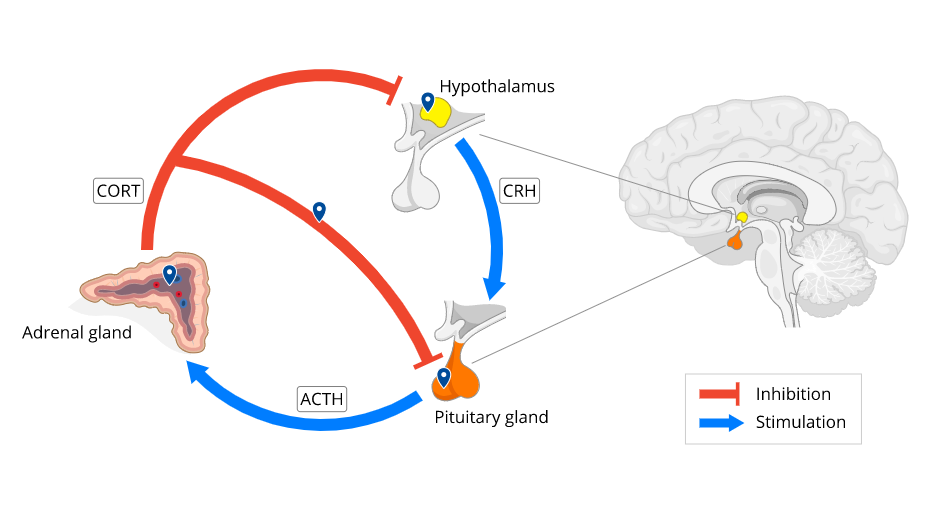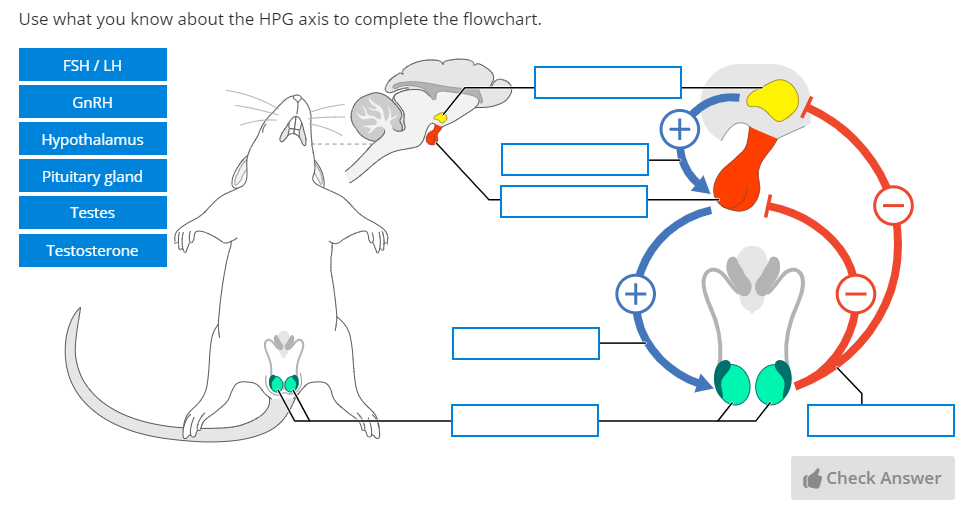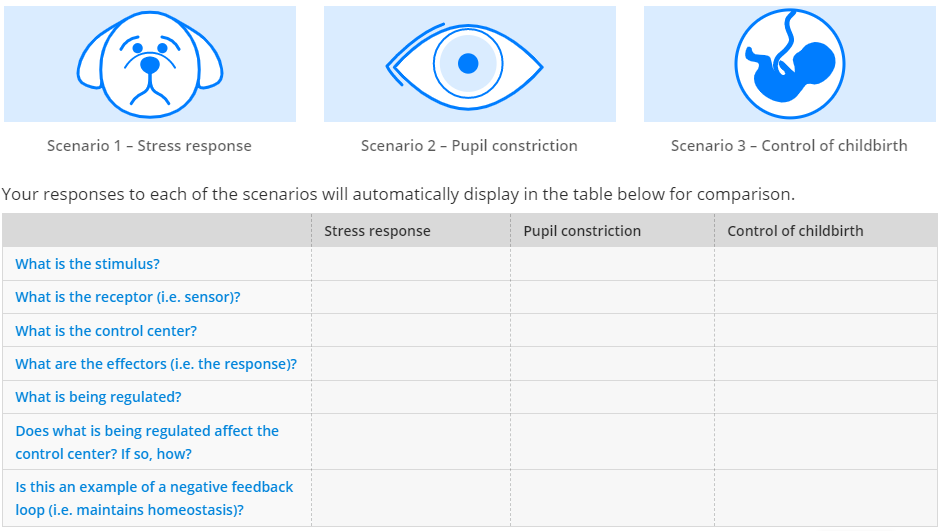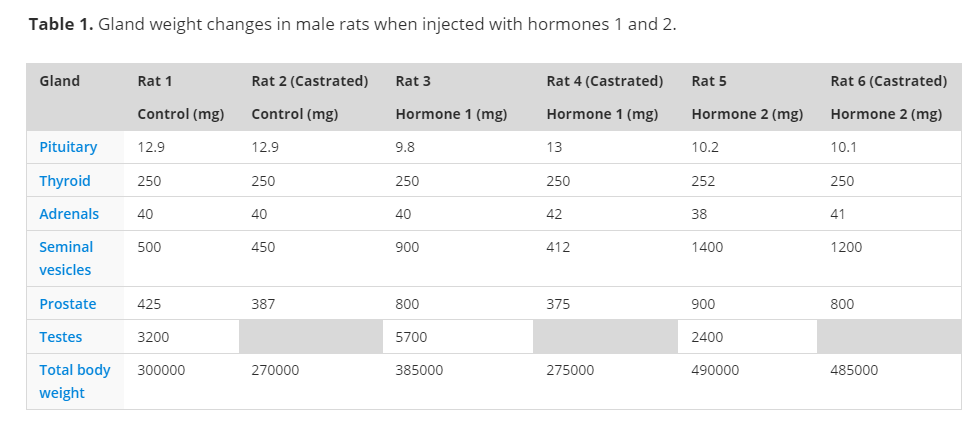We are pleased to announce the release of our Endocrine Physiology Lab, an interactive lab covering the basic structure and function of the endocrine system as well as the importance of feedback loops in regard to endocrine communication.
Students work together to identify the major endocrine organs and examine how different hormones contribute to homeostasis using three unique experiments involving virtual rat activities and feedback loop scenarios.
Keen to try the lab out yourself? See inside the Endocrine Physiology Lab!
The lab is part of our suite of 100+ lessons and labs that make up the Lt Human Physiology Collection, an online teaching solution suitable for both in-person and remote learning.
Take a quick tour through the endocrine lab activities in the video below, and find out what you and your students can expect from this exciting new lesson!
What is endocrine physiology?
Simply said, endocrine physiology describes the system in our bodies that uses hormones to initiate and control body functions such as: reproduction, growth, development, metabolism, and stress. In humans and animals, the endocrine system is a combination of feed-forward and feedback loops, resulting in the secretion of specific hormones directly into the bloodstream, from where they affect almost every cell in our bodies.
Why is it so difficult to teach?
The endocrine system is a rather complex body system, composed of multiple interwoven pathways. Because of this complexity, it is often ignored or reduced to just the reproductive system in undergraduate education. When taught, it is often only taught in lecture format, as it is difficult and expensive to perform in-lab activities because of the difficulties in measuring hormones.
Would you dare to perform an enzyme-linked immunosorbent assay (ELISA) with your class?
Introducing the Endocrine Physiology Lab
Our interactive Endocrine Physiology Lab is now part of Lt's Human Physiology Collection, a complete curriculum of ready-to-use lessons and labs for teaching undergraduate physiology.
You can perform this lab with your students in the classroom, or your students can complete the lab at home as the engaging activities do not require access to a lab.
What’s in the lab?
Overview of endocrine system structure and function
The lab reviews the location of endocrine organs in our body and the specific hormones the brain uses to interact with these organs.
The focus of the lab is on three endocrine systems: the stress axis (HPA), reproductive axis (HPG), and the metabolic axis (HPT), and utilizes these to explain the basic functionality of the endocrine system. Furthermore, the lab introduces the concept of homeostasis and hormone profiles, and how these might get disturbed when the endocrine system malfunctions.

The Endocrine Physiology Lab includes interactive diagrams demonstrating how different hormones within a feedback loop can influence each other.
The lab has been thoughtfully designed, breaking down complex endocrine concepts into easy-to-understand principles, using interactive real-life example scenarios and case study data activities targeted at 1st and 2nd-year undergraduate students.
Hormone feedback loop activities
The recurring principle that spans through the entire lab is the importance of feedback loops in regard to endocrine communication. Students first encounter this with real-life scenarios where they identify if the stress response, childbirth, and pupil constriction are negative feedback loops. Afterward, an interactive activity encourages students to use their critical thinking skills to identify a hormone that was repetitively administered to a “virtual” rat by analyzing the changes this manipulation caused to the animal’s organ weights. Students are then guided through a series of questions that help them explain their findings and consolidate their knowledge about the specific endocrine system.
Review & Integration
The lab closes with a review and integration page that encourages students to summarize their learnings by creating an overview diagram of the endocrine system, including all endocrine organs and the respective hormones. Furthermore, students are challenged to compare the endocrine system with the nervous system and highlight the main differences. Finally, reflective questions are asked to encourage students’ curiosity about the endocrine system and build metacognition.
How can I access the Lab?
For those already using Lt, you can import the Endocrine Lab as part of the Lt Human Physiology Collection.
New to Lt? No worries! You can preview the lab for free via this link, or by using the preview button below. For those wanting to experience the Lt platform immediately, you can sign up for our free trial!
Additional resources:
Teach them a lesson they'll never forget! The Muscle Twitch Response experiment »
Understand Your Physiology: Active online-learning resource for physiology students »
How to teach anatomy remotely »
10 Tips for Teaching Online – How to successfully teach remotely and keep your students engaged »


